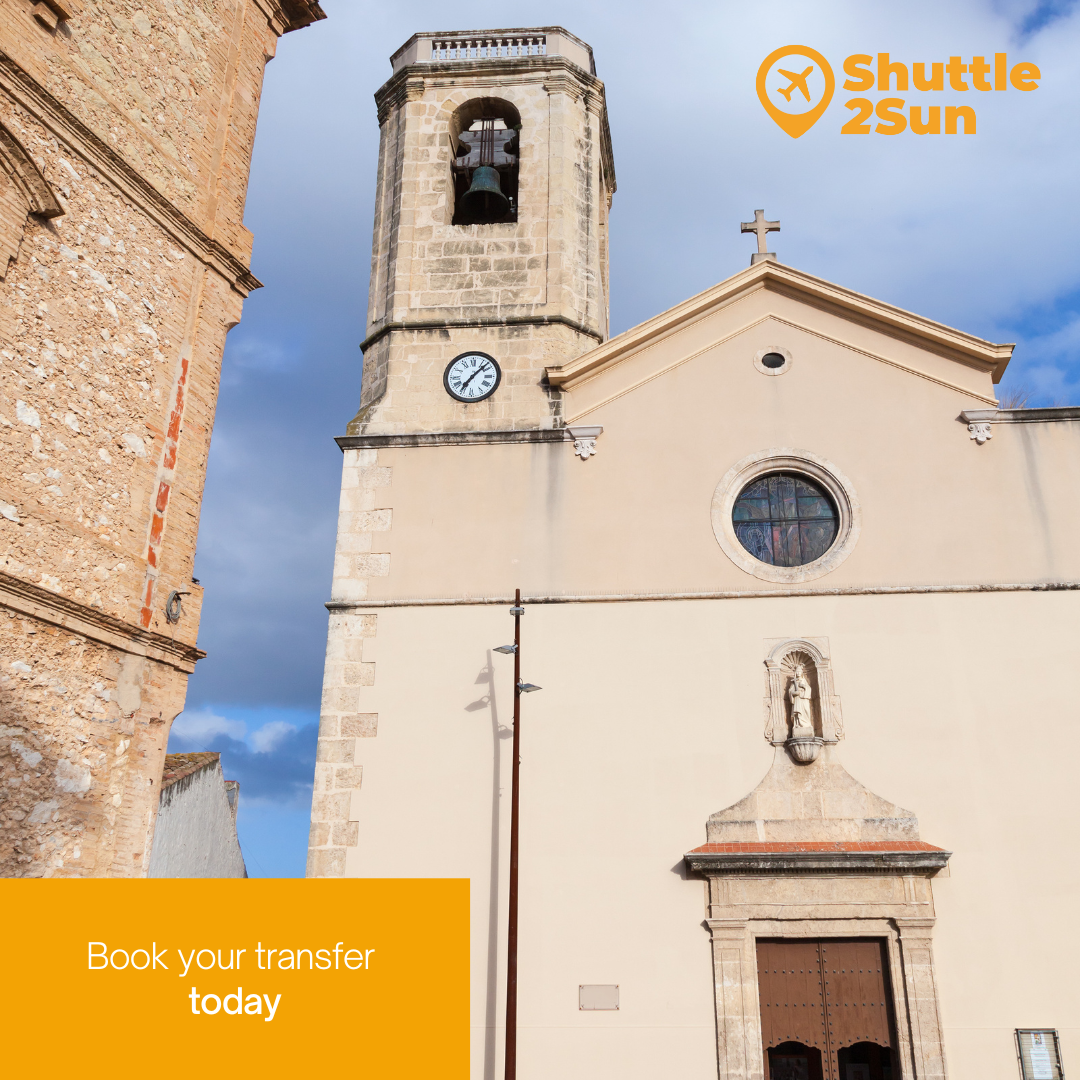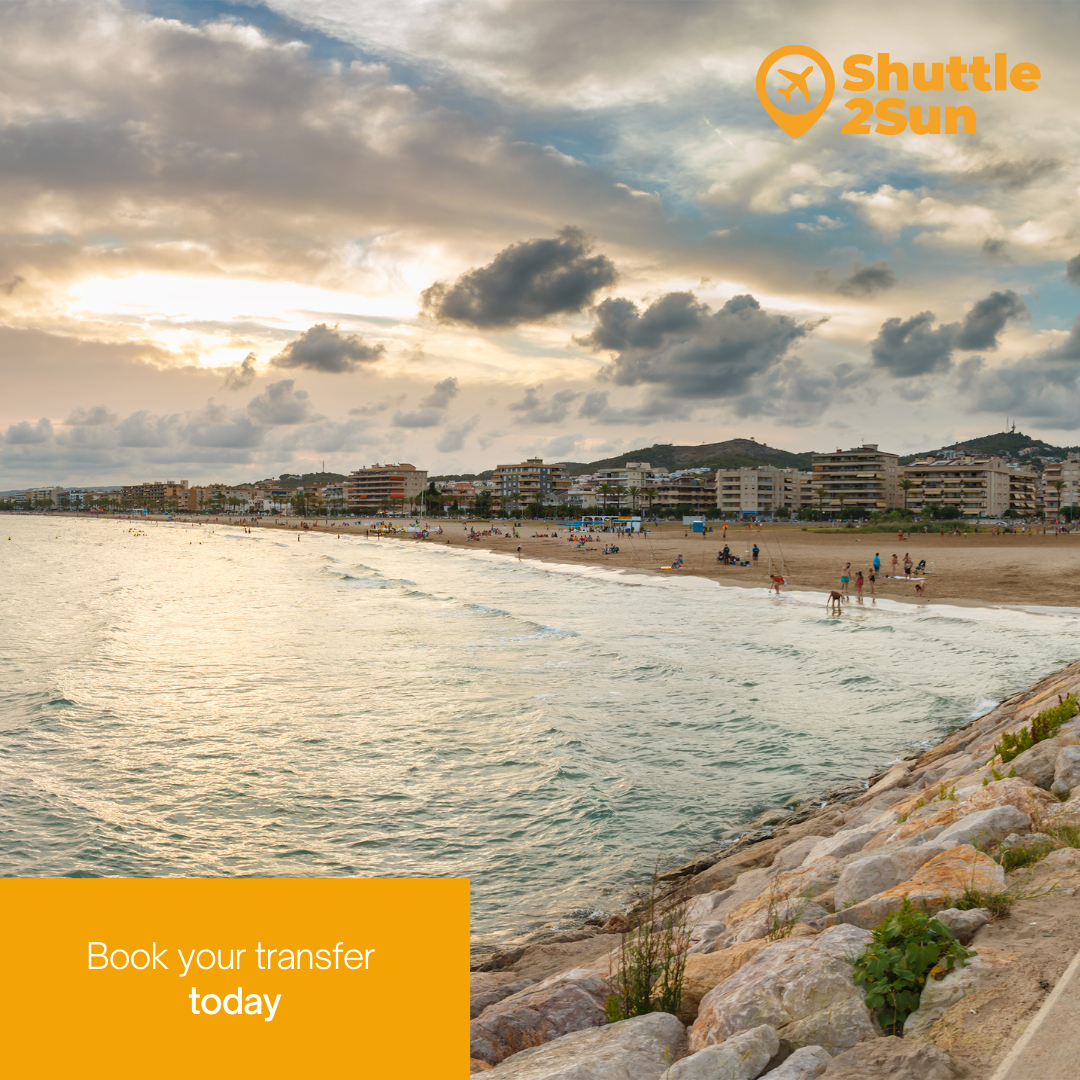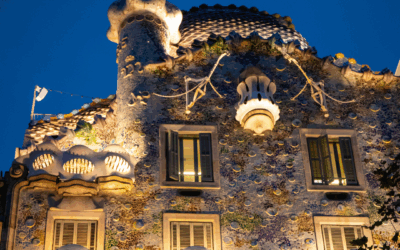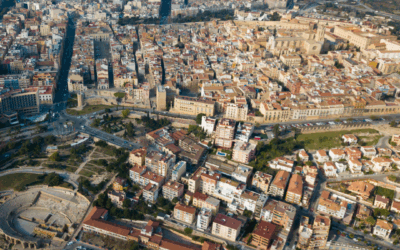To the northeast of Costa Dorada, bathed by the Mediterranean Sea, lies the tourist town of Calafell. If you want to discover a coastal town with a great fishing tradition, a thousand-year-old history and crystal-clear, family beaches, you can’t miss out on a visit to this destination, which has a great offer for you, your family and friends.
If you are thinking of travelling to Calafell or Costa Dorada, with Shuttle2Sun‘s shared transfer services and private transfer services, low-cost and sustainable, you can move comfortably and quickly from Barcelona airport, the port of Barcelona, Reus airport, and even from the AVE Camp de Tarragona train station.
Get to know Calafell and its history
The origins of Calafell, a town with an area of 20.38 km² and 5 uninterrupted linear kilometres of beach, go back 21,000 years. It was in prehistoric times when a small human community settled in the Balma de la Graiera, a cave from that period, to hunt and fish in the Cobertera stream.
One of the most important monuments in this town that you can visit is the Iberian Citadel, a fortress from the 6th century BC, located on a small hill 15 metres high, some 300 metres from the coast. This settlement belonged to the Iberian tribe of the Cossetans, and thanks to its location, its purpose was to control the area and also to spot the arrival of commercial ships.
This enclave was an essential point for the distribution of products from all over the Mediterranean Sea to the interior of the peninsula. Its entire perimeter was walled, and at the highest point was the chieftain’s house, among other buildings of different types. However, this citadel was demolished because of the Second Punic War, in the 3rd century BC, and later, for a short time, it was home to a group of Roman settlers.
You can visit this place if you come to Calafell, thanks to the guided tours, with which you can find out how the Iberians lived, their constructions and their culture.

The municipality also has the Roman site of Vilarenc, from the 1st century BC, which consists of a rectangular villa with several rooms inside. The remains are located on the Passeig de la Unió, between the beach and the village.
On the other hand, you can transport yourself back to the Middle Ages, through the Castle of Santa Cruz, a fortified enclosure first documented in 1037, which is located on the hill of the historic centre of Calafell and which passed through the hands of different noble families throughout history, such as the Palou family, who, from the 14th century, provided the walls with new defences and reformed the style of the castle, converting it into a small Gothic palace.
From the 16th century onwards it began to deteriorate, and in the 17th century it was partially destroyed during the Guerra dels Segadors (Reapers’ War), and later became a cemetery. In 1982, archaeological excavation and restoration began and the site was opened to guided tours.
If you want to visit these historical sites, you can travel to Calafell from Barcelona airport, the port of Barcelona, Reus airport and the Camp de Tarragona AVE train station, with Shuttle2Sun‘s shared transfer services and private transfer services, both low-cost and sustainable.
Also, in Segur de Calafell housing estate, which belongs to the municipality of Calafell, you can visit the Church of Sant Miquel, in Romanesque and Gothic style, which combines elements of both styles. At that time, this urbanisation was part of Cubelles castle district. Initially, it was used as a suffragan chapel of the parish of San Cristóbal de Cunit, and from 1363, it became dependent on the parish of Santa Maria de Cubelles. In 1936, it was burnt down, and in the 1950s, it was refurbished to make it available for housing developments.

On the seafront, there are also several fishermen’s shops dating from the second half of the 17th century. These are simple constructions, built with sand from the beach itself.
One of the most significant buildings is the Casa Barral, which is part of the legacy of the Barcelona poet Carlos Barral, who lived in Calafell since his childhood, devoting himself to writing, publishing and politics. Since 2004, it has been transformed into the House Museum, which allows public visits and different activities.
You can also discover the old Fishermen’s Guild, a building from the Contemporary Age, which has become the interpretation centre of the fishing Calafell, where you can learn how the fishermen lived, their work and their culture.
Routes on foot
Calafell also offers a series of routes that can be done on foot, such as La Cova Foradada, 6km long; the Route through Segur, to learn about its medieval history; the route The Civil War in Calafell, to discover the most significant places of this war; and the route to get to know the centre of Calafell Beach, walking along the promenade and discovering the fishermen’s shops that are still preserved.
The beaches
During your stay in Calafell, you cannot miss any of the three beaches that make up the coastline of Calafell. On the one hand, the beach of Calafell, as its name indicates, which coincides with the nucleus of the beach. Then, Segur beach, which accompanies the entire seafront of Segur de Calafell. And finally, the beach of Estany-Mas Mel, located in front of these two neighbourhoods.
You should also know that the beaches of Calafell are different from the others because of their salutary properties, containing up to five times more iodine than normal, and because of the fineness of their sand.
All its beaches have a lifeguard and first aid service; adapted walkways; showers and footbaths; toilets; children’s playgrounds; sports area; and sun loungers and parasols for hire.
Don’t miss any corner of Calafell. Discover this coastal town, getting around with Shuttle2Sun‘s shared transfer services and private transfer services, low-cost and sustainable, from Barcelona airport, the port of Barcelona, Reus airport, and even from the AVE Camp de Tarragona train station.



